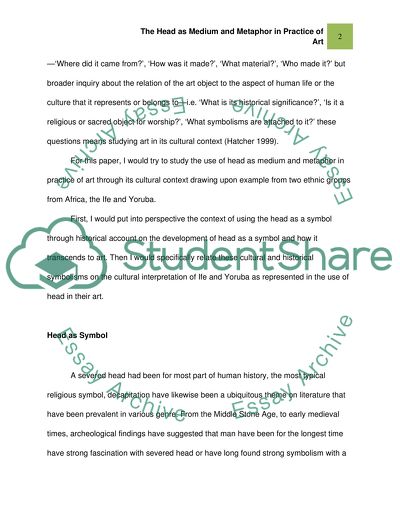Cite this document
(“The head as medium and metaphor Essay Example | Topics and Well Written Essays - 1500 words”, n.d.)
Retrieved from https://studentshare.org/environmental-studies/1409981-the-head-as-medium-and-metaphor
Retrieved from https://studentshare.org/environmental-studies/1409981-the-head-as-medium-and-metaphor
(The Head As Medium and Metaphor Essay Example | Topics and Well Written Essays - 1500 Words)
https://studentshare.org/environmental-studies/1409981-the-head-as-medium-and-metaphor.
https://studentshare.org/environmental-studies/1409981-the-head-as-medium-and-metaphor.
“The Head As Medium and Metaphor Essay Example | Topics and Well Written Essays - 1500 Words”, n.d. https://studentshare.org/environmental-studies/1409981-the-head-as-medium-and-metaphor.


